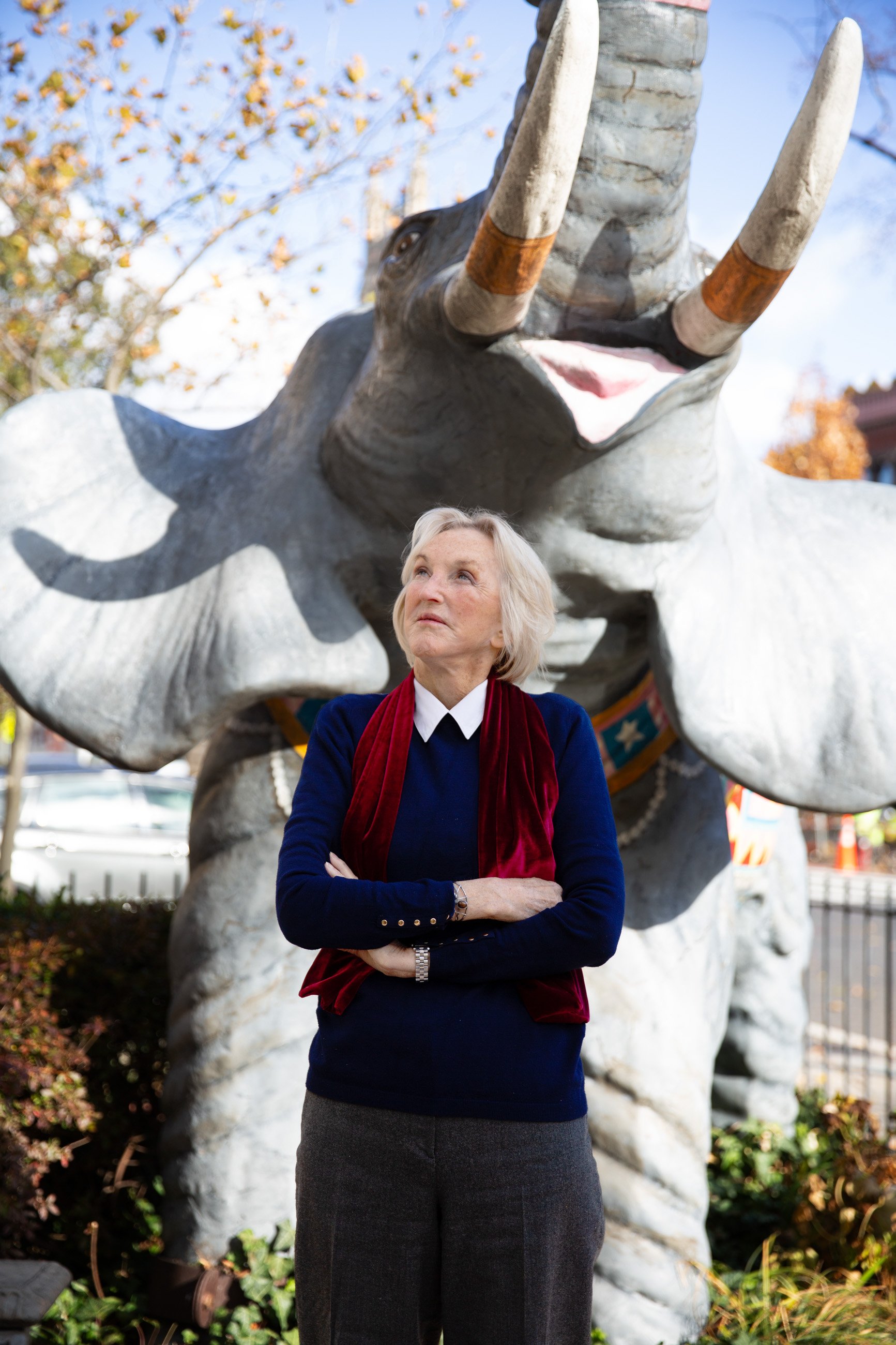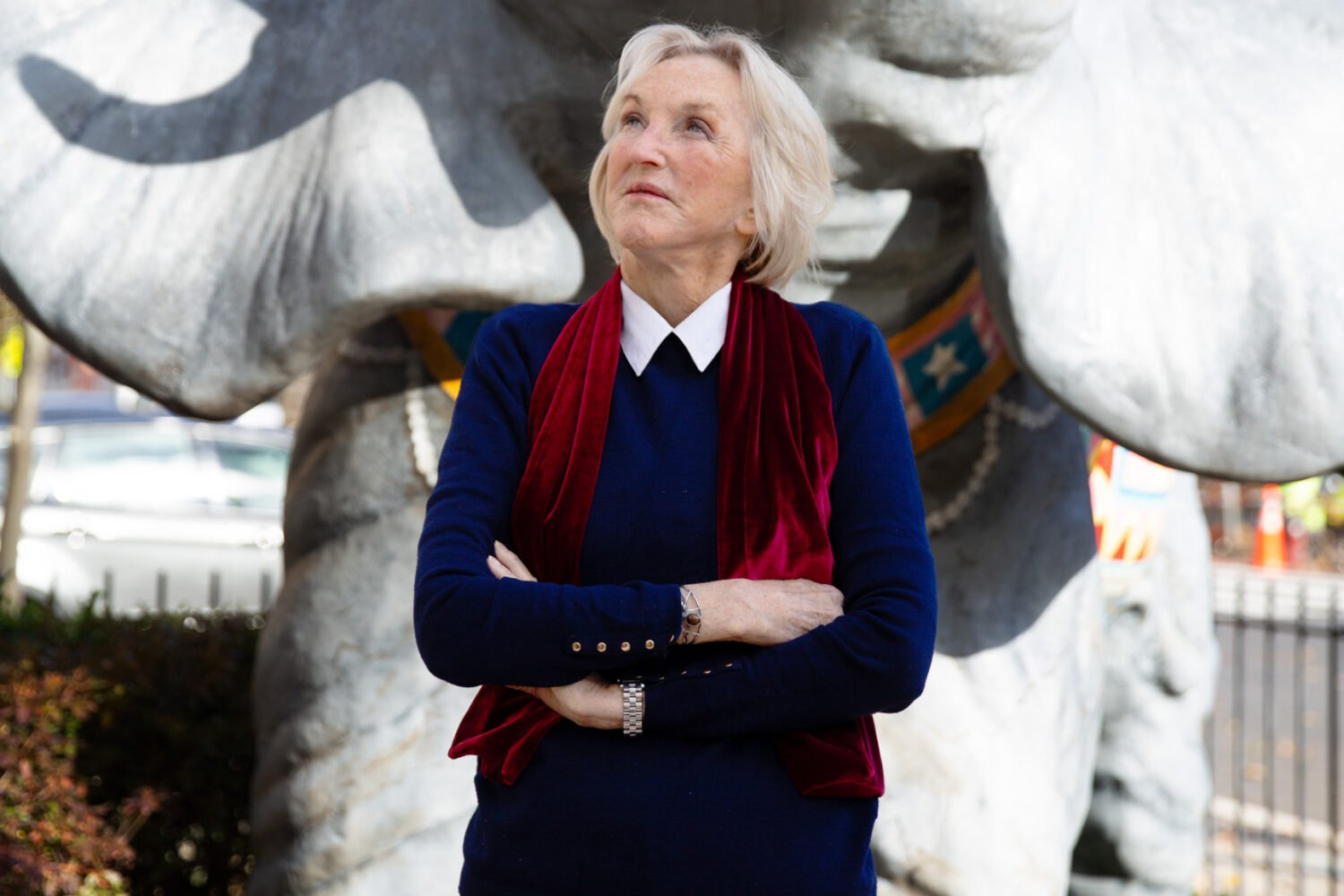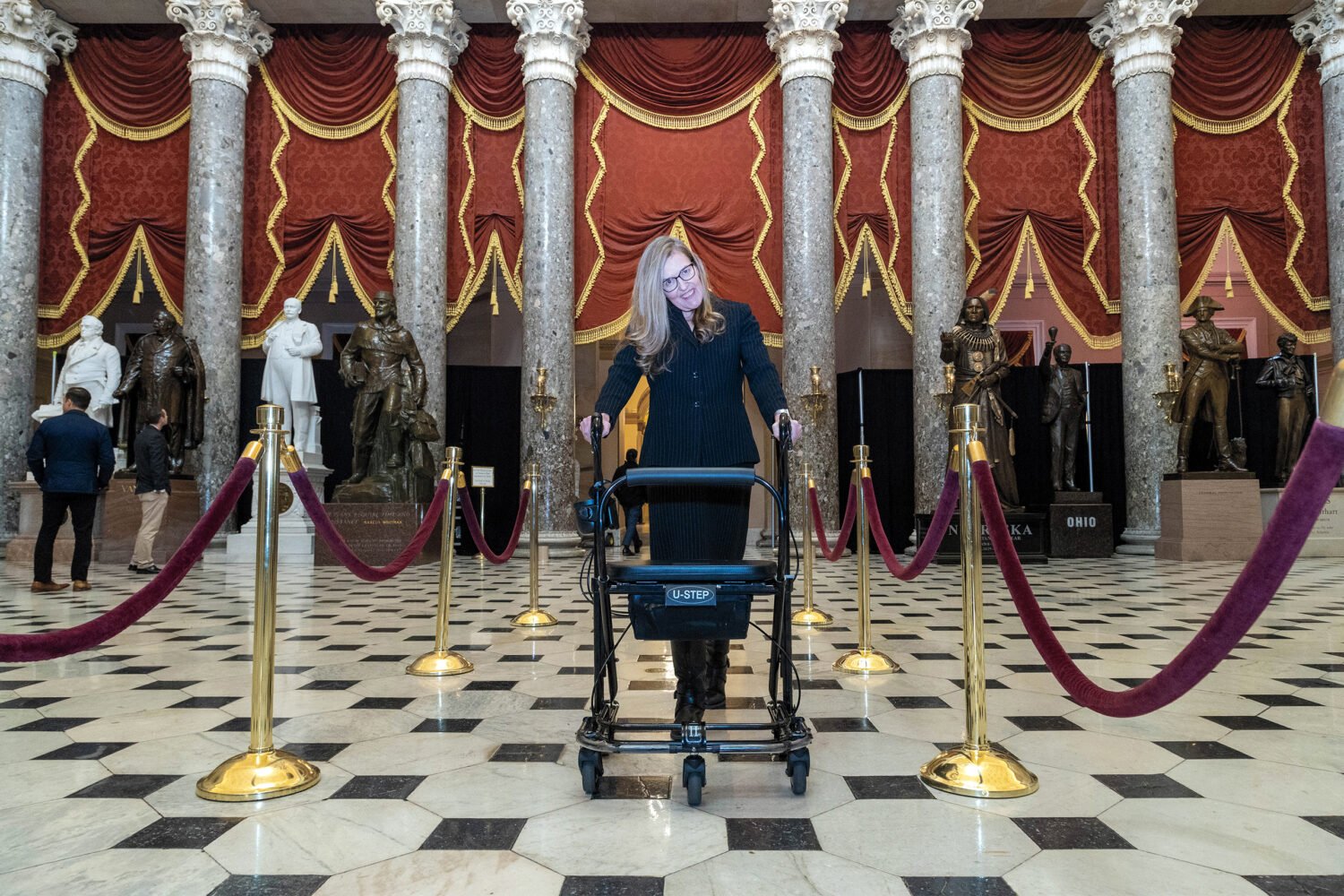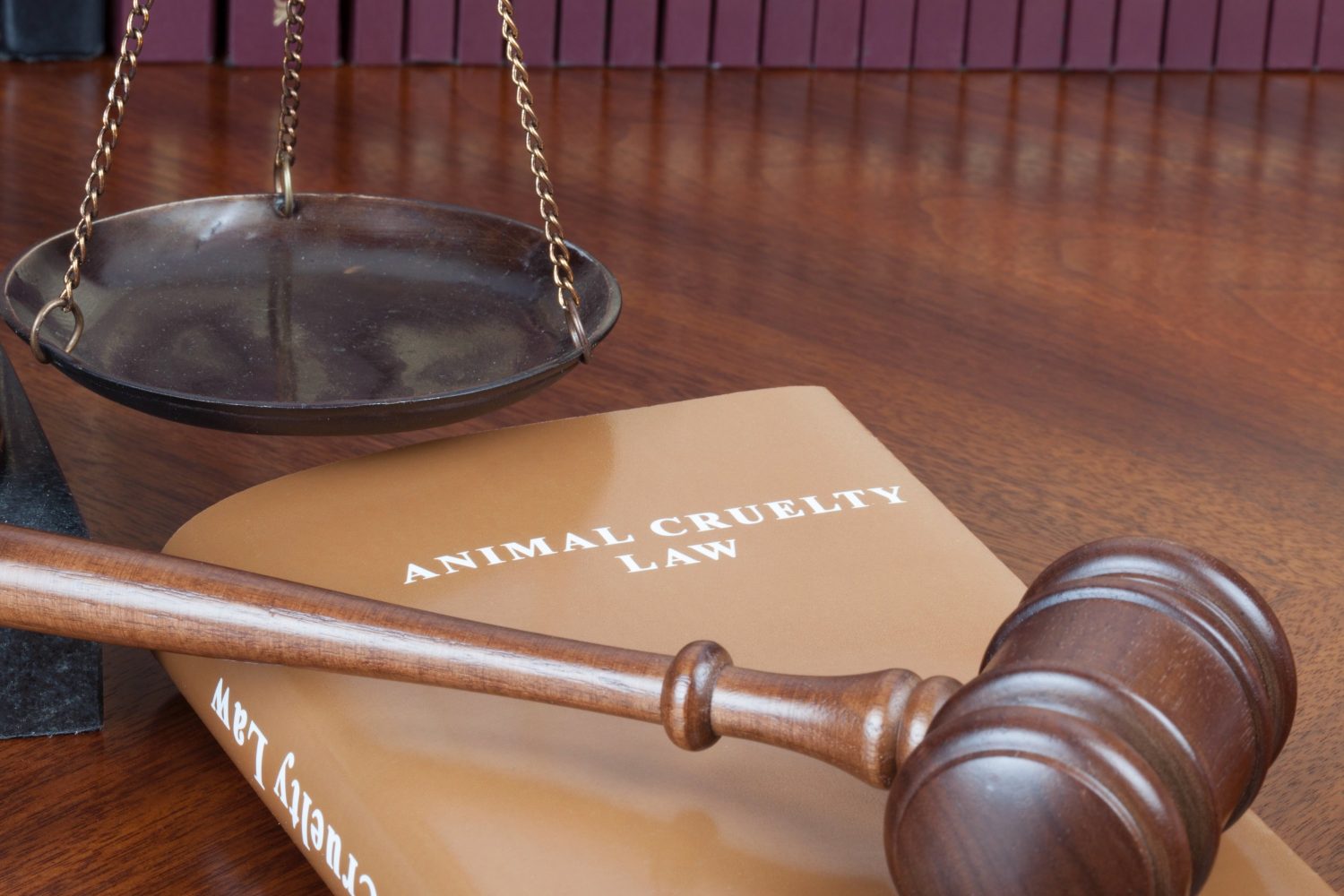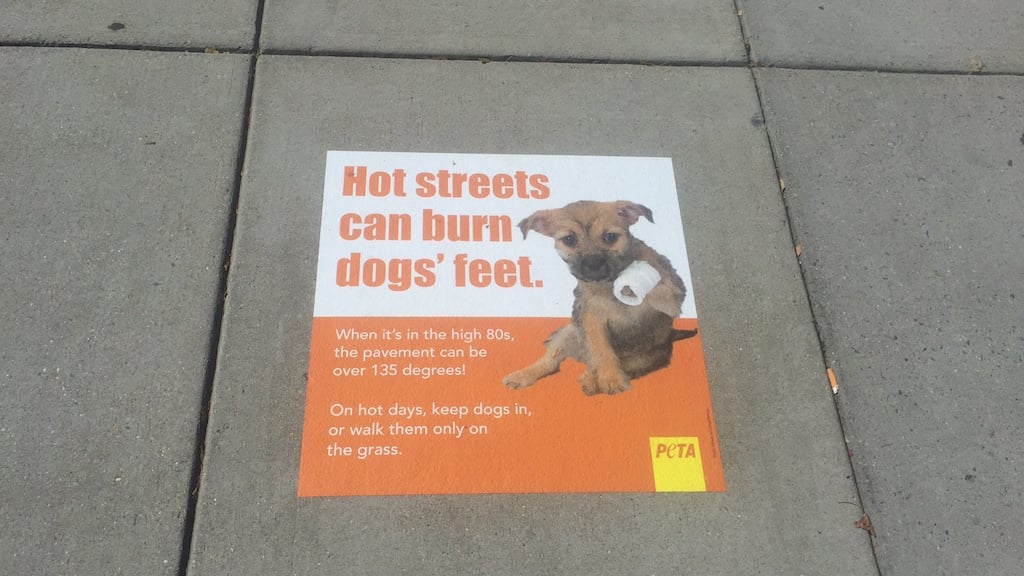would never occur to me to describe ticks as “dear little fellows.” As far as I’m concerned, every last one can burn in hell. Which is probably why I sat there with a baffled look on my face as I listened to Ingrid Newkirk speaking lovingly of the tick that had inflicted her with Rocky Mountain spotted fever a half decade ago.
This was last October, at an afternoon fundraising event at the National Museum of the American Indian. About 100 of us were gathered in a large dining room on the fourth floor, sitting for Newkirk’s speech about the importance—moral necessity, really—of treating bugs well. Grasshoppers. Mosquitoes. Cockroaches, even. And, yes, ticks. An elderly woman with an English accent and a bob of blond hair, Newkirk mused, without a trace of doubt in her voice, “What if ticks thought this was a nice gift they were giving me?”
Despite being one of the world’s most influential animal-rights activists, Newkirk is hardly a household name. But the nonprofit she cofounded in Takoma Park most definitely is. Just say “PETA” and there’s a good chance your interlocutor will feel compelled to either bump fists or acquaint your face with a knuckle sandwich. People for the Ethical Treatment of Animals is the largest animal-rights organization in the world, with some 9 million members, and unquestionably the most controversial. If a medical experiment on a single mouse could cure cancer, PETA would say: Free the mouse.
“I’m not saying we are saints. We draw the line, though. We will never do anything violent.”
Like other advocacy groups looking to change the world, PETA talks to lawmakers, runs fundraising campaigns, disseminates educational material, and organizes protests. Where PETA differs is its aggressive, in-your-face approach. Members of the organization once chucked a dead raccoon onto the plate of Vogue editor Anna Wintour while she lunched at the Four Seasons. (She wears fur, the magazine advertises fur—you get the picture.)They go nude in the streets holding banners saying it’s preferable to wearing fur. They’ve jumped up onstage at Victoria’s Secret shows with their hands painted red. (Not because PETA has a specific beef with lingerie—they just wanted to remind oglers of their view that humans are bloody animal murderers.) They’ve even employed a cleaver-wielding Ronald McDonald to distribute “unhappy meals” to children. (Hey, kids: Ever considered a black-bean burger?)
Newkirk gets in on the action, too. Years ago, she dangled from a hook at London’s Smithfield Market—suspended among decapitated hogs and butt-ass naked herself. “All the butchers came out to have a look,” Newkirk tells me several weeks after her ode to arthropods. “And I said, ‘I know, you’re sorry I’m not 18, but it’s just me.’ ”
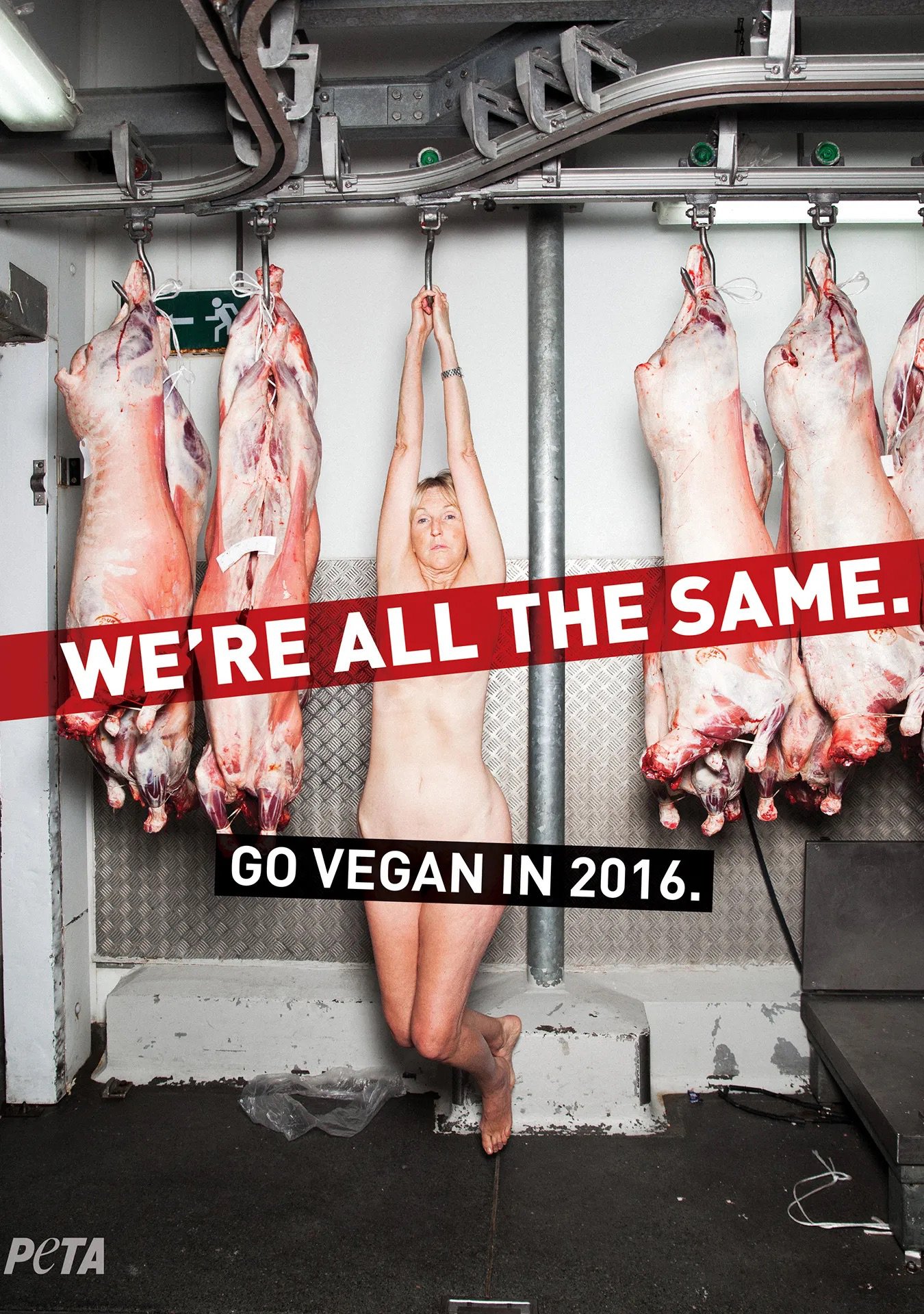
Smug, self-righteous, insufferable, obnoxious: If there’s a word for PETA’s actions, Newkirk, the organization’s president, has heard it. She doesn’t much mind. After all, it was PETA that pressured Ringling Bros. to end its elephant acts, following reports that the animals were whipped, electrically shocked, and held in chains in cramped quarters for extended periods. (Ringling Bros. repeatedly denied those reports and said the change resulted from a mood shift among customers and was not a “validation of the attacks by animal rights groups.”) It was PETA that got the federal government to phase out its mandate that all new drugs should be tested on animals. It was PETA that got Macy’s to stop selling alligator-skin clothing. Just a few years ago, PETA was instrumental in securing a $35 million fine and a permanent ban for Envigo, a Virginia company that bred beagles for use in toxicity tests.
For decades, PETA and Newkirk have fought a war. In many ways, they’ve won—meaningfully changing hearts, minds, and policy here and abroad. Fur clothing is considered by many to be a faux pas. Roughly half of Americans oppose animal testing. Politicians rail against factory farming. More people are eating diets that include imitation meat.
Yet Newkirk, who will celebrate her 76th birthday in June, isn’t satisfied. Not while more than 100 billion animals continue to die annually in testing. Not while meat production has doubled in the last half century. (Just last year, nearly 10 billion cows, sheep, chickens, turkeys, and pigs made their way from abattoir to cellophane to dinner plate.) And not while people like me think nothing of purging my dog of ticks and flushing those dear little fellows down the toilet.
“I’d like nothing better than to just go to the beach with a piña colada,” she says. “But I’ve seen and I care and I couldn’t live with myself if I didn’t keep trying.”
Newkirk believes all living things are prone to pain, fear, hunger, thirst, loneliness, love, and joy. As such, we should treat our fellow mammals, fish, crustaceans—and even insects giving us the gift of disease—with respect and consideration. It’s a radical view, expansive and maximal, one that can be awfully hard for even a sympathetic listener to get behind. It’s also why Newkirk isn’t thinking about retirement. There’s simply too much left to do.
“I’d like nothing better than to just go to the beach with a piña colada,” she says. “But I’ve seen and I care and I couldn’t live with myself if I didn’t keep trying.”
Just before Newkirk’s talk, a member of PETA asked me a question. What is the difference between a cow and a dog?
When I answered that I was a reporter, the member stopped talking to me. Had we continued, I might have said that domesticated dogs are supposed to be pets, having evolved over thousands of years to trade friendship for food. I enjoy having my dog in the house, whereas I probably wouldn’t invite a cow into my living room. It’s not that I think we should be deliberately cruel to cows—it’s just that, to me, there’s a clear hierarchy here: Unlike dogs, cows are bred for the milk and meat they provide.
PETA has other thoughts. “Animals,” the nonprofit’s literature reads, “are not ours to experiment on, eat, wear, use for entertainment, or abuse in any other way.”
Such ideological purity led me to believe that Newkirk, a dutiful vegan, would be rigid and sanctimonious. But when we met at PETA’s DC office on 16th Street—its headquarters are in Norfolk, Virginia—she was anything but. A sharp conversationalist and easy to be around, she’s the kind of person I wouldn’t mind seeing at a barbecue. She probably wouldn’t even take it personally if I ate a beef burger.
“I don’t find it hard to be friends with” people who eat meat, Newkirk says. “I sometimes find it very disappointing.”
English by birth and a naturalized US citizen, Newkirk lived as a toddler on a dairy farm in Cornwall, and from elementary school through driving age, she lived in India. Her father designed bombing systems for a living and was dispatched there by the British for a war with China that never came. In 1968, Newkirk moved to Florida, near Eglin Air Force Base in the western panhandle, when her father was loaned out to the US government for the Vietnam War. There she met her future husband, Charles Steven, a vacationing sports-car driver from Poolesville, Maryland. After they married, they moved to Steven’s home—where a racetrack circled the property and local police took advantage of it in the early morning hours.
Today, Newkirk remains an avid auto-racing fan. She is also a widow, with no children of her own. “I have no family. It’s me. I’m the end of the line,” she tells me, the witty aside on the tip of her tongue. “Hunters can rejoice.”
When she was growing up, Newkirk’s relationship with animals was downright ordinary. She was never deliberately unkind, but seeing a cute baby cow didn’t stop her from enjoying a piece of the Sunday roast. “I was a roast-beef, lamb-chops kid. I had my first fur coat when I was 19,” she says.
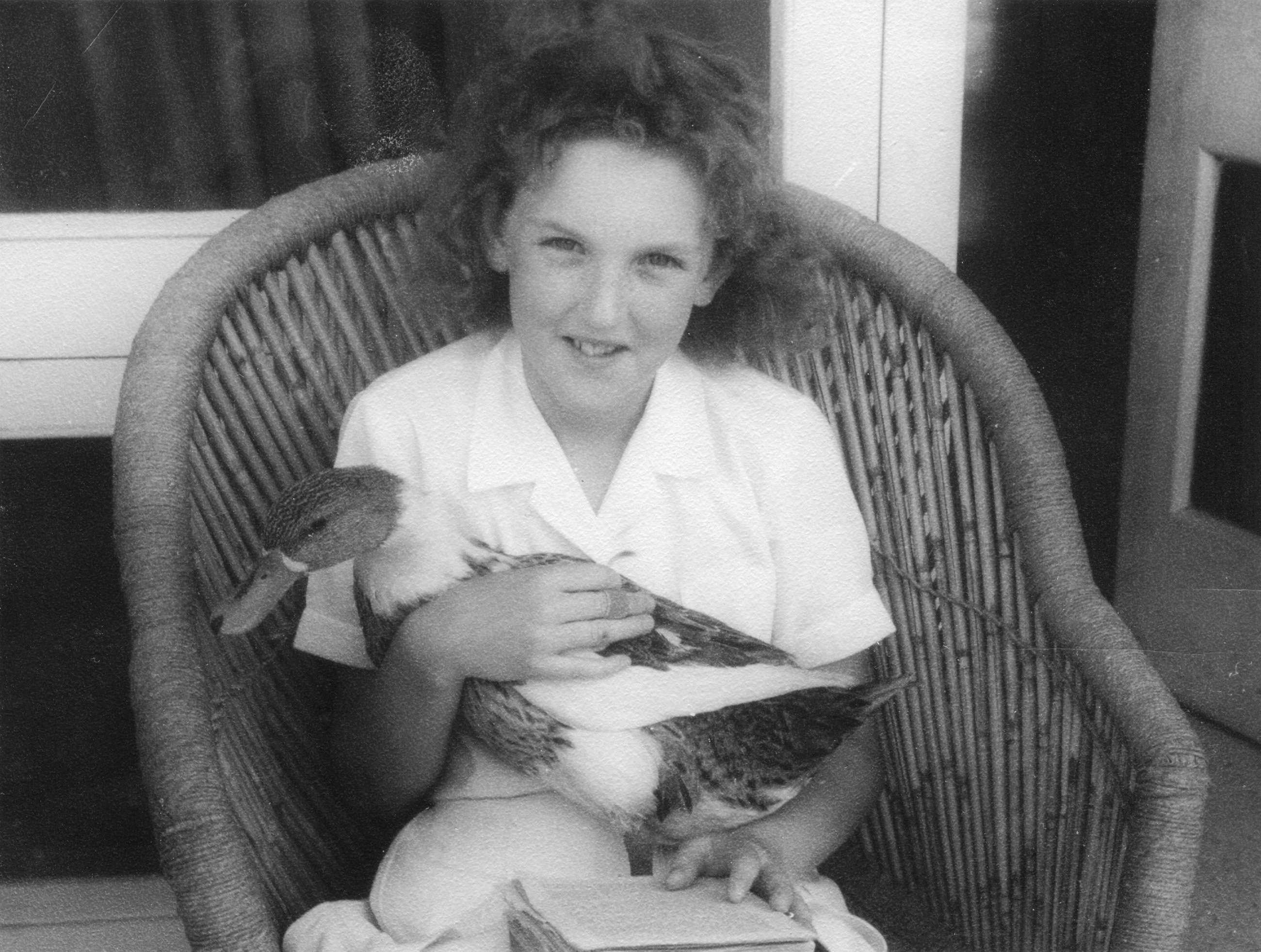
It was in America, land of the Quarter Pounder, where her attitude began to change. While celebrating her 20th birthday at a Philadelphia seafood restaurant in 1969, she decided on lobster, selecting her meal from a tray of live ones. “Broiled or boiled?” the waiter asked. Newkirk opted for the former, not realizing that broiling means cutting a hole in the lobster’s carapace; packing it with salt, pepper, and butter; and shoving said lobster, still alive, under the grill.
“I took one bite, and for some reason I made the connection,” she recalls. “They don’t have voices. All they can do is wiggle their antennae at you. And here I had taken their lives. And so I burst out crying, which of course completely ruined the dinner.”
Three years later, Newkirk says, one of her Poolesville neighbors moved away, leaving behind nearly a dozen cats who began having kittens on her property. Newkirk brought the cats and kittens to an animal shelter, where they were put down. Shocked, she abandoned her goal of becoming a stockbroker and began working at the shelter. Newkirk says the cruelty she witnessed there led her to become an animal-protection officer in Montgomery County and later in DC.
One particular call, in the mid-1970s, brought her to an abandoned farm. Horses left in the stalls had died of starvation and dehydration. Dead pigs littered the yard. She found one piglet, barely alive, and tried to give it a drink; it grunted in pain the whole time. Newkirk took it to a veterinarian and, on her way home, thought there was no way she could eat the pork chops sitting in her fridge.
This is how it went, one call and then another, Newkirk crossing animals off her menu. In 1980, she happened upon Peter Singer’s 1975 book, Animal Liberation. Widely regarded as the bible of the modern animal-rights movement, it argues that humans and animals share an interest in living free from harm. It’s not so much that they’re equal—it’s that people deny animals a harmless existence because they use them as they please.
At the time, Newkirk was working at the District’s dog pound. “I was the first DC poundmaster,” she says with a grin. “I love that title.” The facility was, she recalls, a “dirty, filthy place with no veterinary care.” In response, she helped get legislation passed to provide public funding for veterinary services and was instrumental in establishing the shelter’s first adoption program for homeless animals.
The book was epiphanic, capturing everything Newkirk was feeling. She began holding meetings in the living room of her Rockville apartment with like-minded friends. The goal, she says, was to do the “homework” for others, suggesting what to eat and what to wear without involving animals at all. She proposed forming a group, and PETA came into being.
It certainly wasn’t PETA that first argued that all animals, not just those we think of as pets, ought to be held in higher regard. In 1958, the federal Humane Slaughter Act required that farm animals be unconscious before being killed. Eight years later, the Animal Welfare Act was passed in a push for better treatment of laboratory animals.
Drawing on her previous experience conducting lab-animal welfare checks for Montgomery County, Newkirk set PETA’s sights on labs near her apartment. The closest was the Institute for Behavioral Research in Silver Spring, where a neuroscientist named Edward Taub was deliberately severing the nerves of macaque monkeys, leaving them with intact limbs they could no longer feel. The reason? Taub wondered if he could somehow retrain the animals to use those limbs—and then apply the insights to human stroke victims, who, depending on the severity of their stroke, can have difficulty controlling muscles and movement on one side of their bodies.
Funded by the National Institutes of Health, Taub’s research was legal. But the conditions at his lab were unsanitary, and the long-faced, pouch-mouthed, forest-dwelling macaques were often bound by the limbs and neck. In 1981, early PETA member Alex Pacheco got a volunteer job at the lab. Pacheco was a George Washington University student who had also worked with the Sea Shepherd Conservation Society, an anti-poaching group focused on marine life. Using a hidden camera, he photographed the scenes inside, which included macaques “with open sores and fingers that had been bitten to stubs,” according to reporting at the time. (PETA sued Washingtonian for libel over a February 1990 article about the organization, which mentioned the work of and raid on this lab. The magazine settled the suit, acknowledging mistakes and making a donation to the animal-rights movement.)
PETA sent that evidence to police, who raided and later shut the facility down. Meanwhile, Newkirk and other PETA members, some dressed as caged monkeys, protested outside NIH, bringing national attention to a local story. Taub ultimately was convicted of cruelty to animals for failing to provide veterinary care to six monkeys, the first time a US researcher conducting animal testing was found guilty of abuse. Five of those counts were overturned in a second trial, and the sixth was overturned on appeal when a court ruled that Maryland’s animal-cruelty laws didn’t apply to federally funded labs. Still, the case helped inspire 1985 updates to the original Animal Welfare Act, including requirements that animal-research facilities be inspected twice a year and that nonhuman primates be situated in environments conducive to their physical and mental well-being.
The so-called “Silver Spring Monkeys” also propelled PETA into the spotlight, establishing a formula for the organization’s activism going forward: moral messaging, undercover investigations, and what Newkirk describes as “educational” protest. Newkirk and company saw change-making value not only in exposing animal cruelty and appealing to our better angels, but also in getting people to stop and think by being provocative. Two years ago, for example, PETA helped stop decompression-sickness experiments on sheep at the University of Wisconsin–Madison. Protesters were dressed in sheep costumes, with tears dripping from their eyes.
This honey-and-vinegar approach mirrors the split nature of Newkirk’s personality. There’s Ingrid the golden retriever, who enjoys picking up and pitching discarded beer bottles during walks around DC. Then there’s Ingrid the bulldog, who won’t shy away from a fight if it means saving an animal. “I’m not saying we are saints,” she says. “We draw the line, though. We will never do anything violent.”
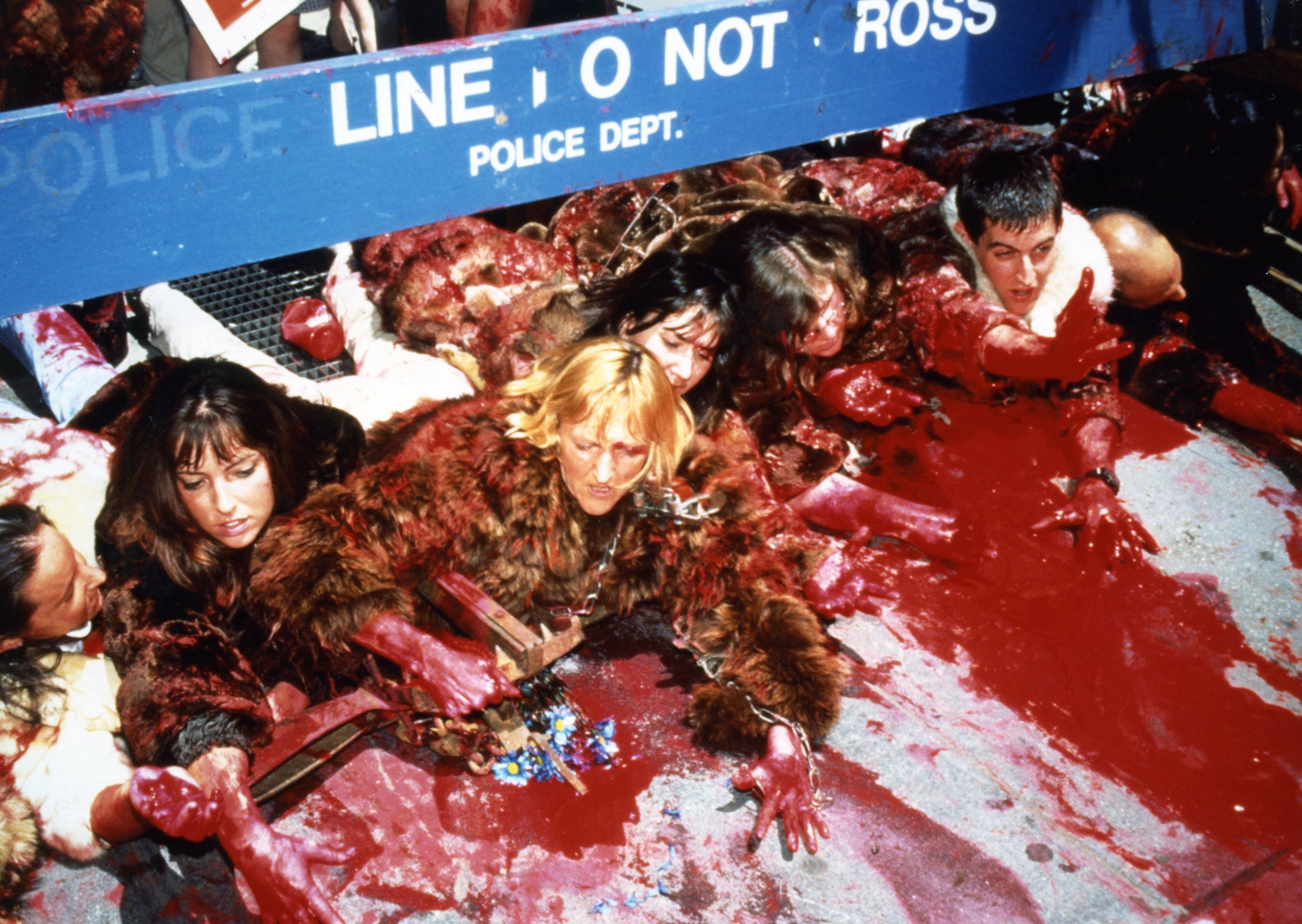
Animal-rights activists have been known to throw tofu cream pies and flour at high-profile people from the fashion world who wear and support fur. As a prank in 2022, PETA posted an article on its website touting the “Little Animal Rights Activist’s First Paint-Throwing Kit,” a handheld paint gun that squirts “water-based, washable paint on anyone wearing wool, fur, leather, or any other cruelly obtained animal-derived clothing!” Chucking foodstuffs at someone, I’d argue, counts as violence, at least mildly. But Newkirk insists such actions are “not our modus operandi.” Instead, she says, PETA’s style is more akin to what she did for her birthday last summer: She drove around Chicago in a truck wrapped in images of slaughterhouse pigs, deliberately parking in front of barbecue joints, and played the cries of frightened pulled-pork-to-be from a loudspeaker.
None of this, Newkirk says, is provocation for its own sake. “This social issue needs to be on people’s minds and to be at dinner-table discussions and so on,” she says. “So we will do gimmicky things.” In 2011, PETA filed a lawsuit on behalf of the orcas at SeaWorld, arguing that the killer whales should be protected by the 13th Amendment, which prohibits slavery. A federal judge dismissed the suit, ruling that constitutional protections apply only to humans. In the years since, however, public disfavor—in part fueled by PETA—has contributed to SeaWorld’s stopping its practice of breeding orcas in captivity. The handful still remaining in its parks will be the last. Such is PETA’s calculation: Gimmicks bring attention, attention leads to consideration, and consideration produces change. Long before the rise of social media, the organization understood the attention economy—and, one could argue, the power of trolling.
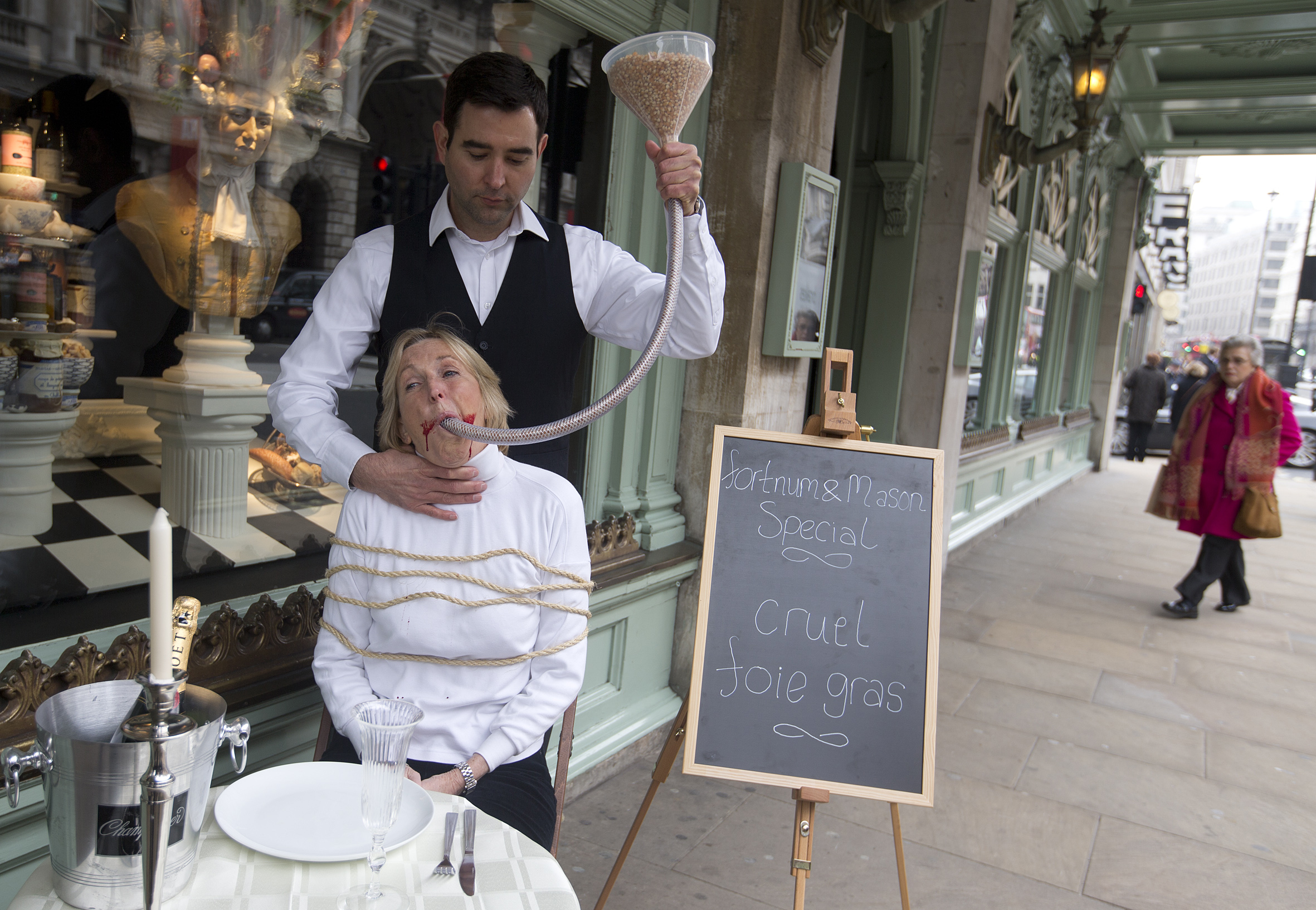
Of course, trolling has a Newtonian quality: It tends to produce an equal and opposite reaction. There’s a reason “those PETA people” is, for many, a pejorative. The organization has taken heat from feminists for its anti-fur ads featuring nude models and celebrities, and from the Anti-Defamation League for a 2005 exhibition and website called “Holocaust on Your Plate,” which juxtaposed images of animals on farms with those of people in Nazi concentration camps. (On a lighter note, I can recall, back in 2019, writing a story about Jimmy’s Famous Seafood in Baltimore—which picked a fight with PETA after the group bought billboard space to run an ad featuring a large crab with the message “I’m ME, not MEAT.” The owner of Jimmy’s responded with his own billboard ad with the image of a crab and the message “SteaMEd crabs. Here to stay.”)
Some of the backlash against PETA goes far beyond angry words. It’s not uncommon, Newkirk says, for the organization’s Norfolk headquarters to receive packages filled with the guts of dead creatures. One time, a hunter sent a photo of lifeless rabbits that spelled out “Fuck PETA.” Another time, a box contained the heart of a hamster.
Others condemn PETA for being hypocritical. The group rescues dogs kept on chains, builds doghouses, and operates a mobile clinic that spays and neuters the animals. But PETA also runs a shelter at its HQ that regularly euthanizes man’s best friend. It takes in any dog, no matter its physical condition. Many, inevitably, have to be euthanized. While even a cursory Google search turns up websites with names like PETAKillsAnimals.com, PETA vice president of cruelty investigations Daphna Nachminovitch has repeatedly defended putting dogs down, arguing that they’d otherwise suffer more on the road to death.
“We are criticized for euthanasia, but euthanasia is a fact of life,” Newkirk says. “And it’s a horrible thing, because human beings created a scenario where we have millions of homeless animals with nowhere to go.”
Over the years, she has collected an eclectic group of animal-rights-supporting friends and acquaintances, ranging from Paul McCartney to Pamela Anderson. Among them was the Emmy-winning film narrator and voiceover performer Mike Handley, who prior to his 2009 death did commercials for Ronald Reagan. Handley and Newkirk met years earlier—he called her after finding a dog that had been hit by a car on I-495. The two went to punk-rock concerts together; when they dined, Handley would mock her for being vegan as he happily scarfed down cuts of steak. But a half decade after PETA’s founding, he went vegetarian, stopped fishing, and threw away his leather garments.
Handley chose to raise his son, Magnús, the same way. “He refused to bring another meat eater into this world,” says Magnús Magnusson, who lives in Iceland and goes by his traditional Icelandic name. Like his father, he’s raising his own sons as vegetarians—and the credit, he says, goes to Newkirk: “The movement needs someone like her, who just lives and breathes the ideals and serves as a guiding light for the rest of us.”
Back at the National Museum of the American Indian, I almost laughed when I learned that Newkirk’s talk would include the subject of insects. I began running down a list with Colleen O’Brien, senior vice president of media relations at PETA: Was it fair game to swat mosquitoes? To destroy a wasp nest? To catch and dispose of ants marching into your home? “It’s not like we’re living with cockroaches in our houses,” she told me.
As Newkirk told a story about freeing a bagful of live snails she’d bought from an Italian grocer in Poolesville and intended to cook and eat, I couldn’t help but think about the tiny creatures that were no longer sharing space with me. My wife and I had moved into a new house over the summer, and we quickly found a colony of cave crickets in our basement. I hit Home Depot for cricket traps and quickly deployed them. Then I called Orkin. I haven’t seen a live cricket since early September.
I consider that a win. Newkirk would feel differently. Only she’s never given up on people like me, or you. Hers is a gospel of compassion, and not simply for the ticks. At the end of our meeting in her office, Newkirk armed me with a vegan lunch. She stood up, looked right at me, and said, “Try to be kind.” At the time, I figured she was talking about this story and what I might write about her. It wasn’t until a few weeks later that I grasped her deeper meaning: to treat all living things the way we’d like to be treated.
would never occur to me to describe ticks as “dear little fellows.” As far as I’m concerned, every last one can burn in hell. Which is probably why I sat there with a baffled look on my face as I listened to Ingrid Newkirk speaking lovingly of the tick that had inflicted her with Rocky Mountain spotted fever a half decade ago.
This was last October, at an afternoon fundraising event at the National Museum of the American Indian. About 100 of us were gathered in a large dining room on the fourth floor, sitting for Newkirk’s speech about the importance—moral necessity, really—of treating bugs well. Grasshoppers. Mosquitoes. Cockroaches, even. And, yes, ticks. An elderly woman with an English accent and a bob of blond hair, Newkirk mused, without a trace of doubt in her voice, “What if ticks thought this was a nice gift they were giving me?”
Despite being one of the world’s most influential animal-rights activists, Newkirk is hardly a household name. But the nonprofit she cofounded in Takoma Park most definitely is. Just say “PETA” and there’s a good chance your interlocutor will feel compelled to either bump fists or acquaint your face with a knuckle sandwich. People for the Ethical Treatment of Animals is the largest animal-rights organization in the world, with some 9 million members, and unquestionably the most controversial. If a medical experiment on a single mouse could cure cancer, PETA would say: Free the mouse.
“I’m not saying we are saints. We draw the line, though. We will never do anything violent.”
Like other advocacy groups looking to change the world, PETA talks to lawmakers, runs fundraising campaigns, disseminates educational material, and organizes protests. Where PETA differs is its aggressive, in-your-face approach. Members of the organization once chucked a dead raccoon onto the plate of Vogue editor Anna Wintour while she lunched at the Four Seasons. (She wears fur, the magazine advertises fur—you get the picture.)They go nude in the streets holding banners saying it’s preferable to wearing fur. They’ve jumped up onstage at Victoria’s Secret shows with their hands painted red. (Not because PETA has a specific beef with lingerie—they just wanted to remind oglers of their view that humans are bloody animal murderers.) They’ve even employed a cleaver-wielding Ronald McDonald to distribute “unhappy meals” to children. (Hey, kids: Ever considered a black-bean burger?)
Newkirk gets in on the action, too. Years ago, she dangled from a hook at London’s Smithfield Market—suspended among decapitated hogs and butt-ass naked herself. “All the butchers came out to have a look,” Newkirk tells me several weeks after her ode to arthropods. “And I said, ‘I know, you’re sorry I’m not 18, but it’s just me.’ ”

Smug, self-righteous, insufferable, obnoxious: If there’s a word for PETA’s actions, Newkirk, the organization’s president, has heard it. She doesn’t much mind. After all, it was PETA that pressured Ringling Bros. to end its elephant acts, following reports that the animals were whipped, electrically shocked, and held in chains in cramped quarters for extended periods. (Ringling Bros. repeatedly denied those reports and said the change resulted from a mood shift among customers and was not a “validation of the attacks by animal rights groups.”) It was PETA that got the federal government to phase out its mandate that all new drugs should be tested on animals. It was PETA that got Macy’s to stop selling alligator-skin clothing. Just a few years ago, PETA was instrumental in securing a $35 million fine and a permanent ban for Envigo, a Virginia company that bred beagles for use in toxicity tests.
For decades, PETA and Newkirk have fought a war. In many ways, they’ve won—meaningfully changing hearts, minds, and policy here and abroad. Fur clothing is considered by many to be a faux pas. Roughly half of Americans oppose animal testing. Politicians rail against factory farming. More people are eating diets that include imitation meat.
Yet Newkirk, who will celebrate her 76th birthday in June, isn’t satisfied. Not while more than 100 billion animals continue to die annually in testing. Not while meat production has doubled in the last half century. (Just last year, nearly 10 billion cows, sheep, chickens, turkeys, and pigs made their way from abattoir to cellophane to dinner plate.) And not while people like me think nothing of purging my dog of ticks and flushing those dear little fellows down the toilet.
“I’d like nothing better than to just go to the beach with a piña colada,” she says. “But I’ve seen and I care and I couldn’t live with myself if I didn’t keep trying.”
Newkirk believes all living things are prone to pain, fear, hunger, thirst, loneliness, love, and joy. As such, we should treat our fellow mammals, fish, crustaceans—and even insects giving us the gift of disease—with respect and consideration. It’s a radical view, expansive and maximal, one that can be awfully hard for even a sympathetic listener to get behind. It’s also why Newkirk isn’t thinking about retirement. There’s simply too much left to do.
“I’d like nothing better than to just go to the beach with a piña colada,” she says. “But I’ve seen and I care and I couldn’t live with myself if I didn’t keep trying.”
Just before Newkirk’s talk, a member of PETA asked me a question. What is the difference between a cow and a dog?
When I answered that I was a reporter, the member stopped talking to me. Had we continued, I might have said that domesticated dogs are supposed to be pets, having evolved over thousands of years to trade friendship for food. I enjoy having my dog in the house, whereas I probably wouldn’t invite a cow into my living room. It’s not that I think we should be deliberately cruel to cows—it’s just that, to me, there’s a clear hierarchy here: Unlike dogs, cows are bred for the milk and meat they provide.
PETA has other thoughts. “Animals,” the nonprofit’s literature reads, “are not ours to experiment on, eat, wear, use for entertainment, or abuse in any other way.”
Such ideological purity led me to believe that Newkirk, a dutiful vegan, would be rigid and sanctimonious. But when we met at PETA’s DC office on 16th Street—its headquarters are in Norfolk, Virginia—she was anything but. A sharp conversationalist and easy to be around, she’s the kind of person I wouldn’t mind seeing at a barbecue. She probably wouldn’t even take it personally if I ate a beef burger.
“I don’t find it hard to be friends with” people who eat meat, Newkirk says. “I sometimes find it very disappointing.”
English by birth and a naturalized US citizen, Newkirk lived as a toddler on a dairy farm in Cornwall, and from elementary school through driving age, she lived in India. Her father designed bombing systems for a living and was dispatched there by the British for a war with China that never came. In 1968, Newkirk moved to Florida, near Eglin Air Force Base in the western panhandle, when her father was loaned out to the US government for the Vietnam War. There she met her future husband, Charles Steven, a vacationing sports-car driver from Poolesville, Maryland. After they married, they moved to Steven’s home—where a racetrack circled the property and local police took advantage of it in the early morning hours.
Today, Newkirk remains an avid auto-racing fan. She is also a widow, with no children of her own. “I have no family. It’s me. I’m the end of the line,” she tells me, the witty aside on the tip of her tongue. “Hunters can rejoice.”
When she was growing up, Newkirk’s relationship with animals was downright ordinary. She was never deliberately unkind, but seeing a cute baby cow didn’t stop her from enjoying a piece of the Sunday roast. “I was a roast-beef, lamb-chops kid. I had my first fur coat when I was 19,” she says.
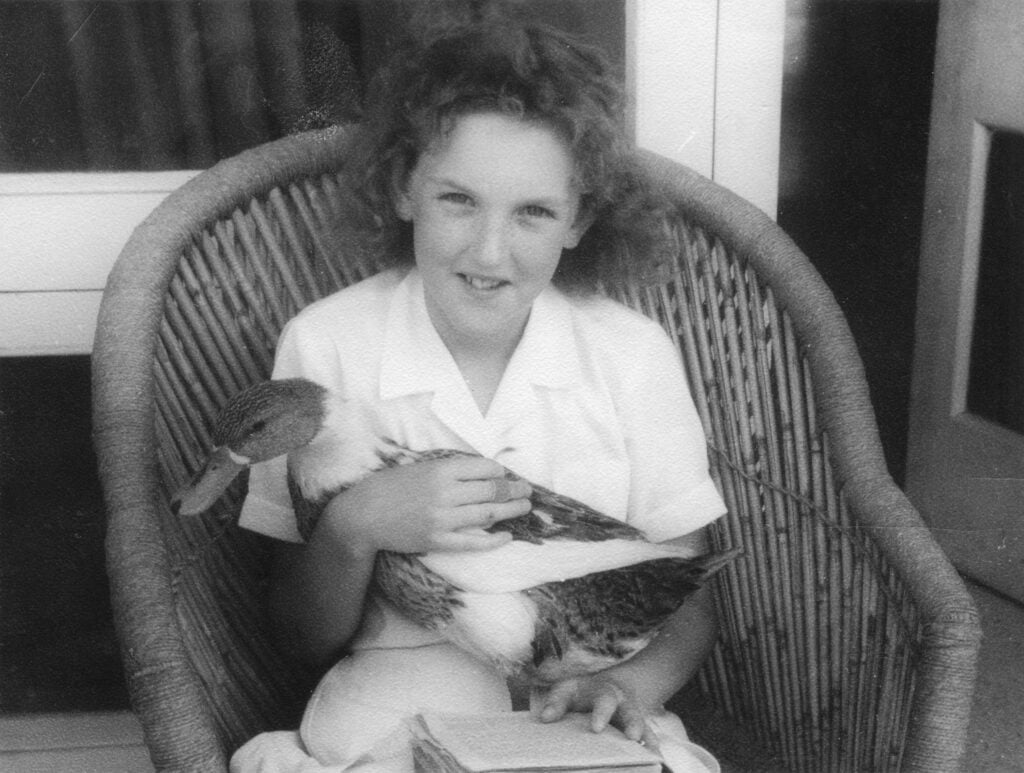
It was in America, land of the Quarter Pounder, where her attitude began to change. While celebrating her 20th birthday at a Philadelphia seafood restaurant in 1969, she decided on lobster, selecting her meal from a tray of live ones. “Broiled or boiled?” the waiter asked. Newkirk opted for the former, not realizing that broiling means cutting a hole in the lobster’s carapace; packing it with salt, pepper, and butter; and shoving said lobster, still alive, under the grill.
“I took one bite, and for some reason I made the connection,” she recalls. “They don’t have voices. All they can do is wiggle their antennae at you. And here I had taken their lives. And so I burst out crying, which of course completely ruined the dinner.”
Three years later, Newkirk says, one of her Poolesville neighbors moved away, leaving behind nearly a dozen cats who began having kittens on her property. Newkirk brought the cats and kittens to an animal shelter, where they were put down. Shocked, she abandoned her goal of becoming a stockbroker and began working at the shelter. Newkirk says the cruelty she witnessed there led her to become an animal-protection officer in Montgomery County and later in DC.
One particular call, in the mid-1970s, brought her to an abandoned farm. Horses left in the stalls had died of starvation and dehydration. Dead pigs littered the yard. She found one piglet, barely alive, and tried to give it a drink; it grunted in pain the whole time. Newkirk took it to a veterinarian and, on her way home, thought there was no way she could eat the pork chops sitting in her fridge.
This is how it went, one call and then another, Newkirk crossing animals off her menu. In 1980, she happened upon Peter Singer’s 1975 book, Animal Liberation. Widely regarded as the bible of the modern animal-rights movement, it argues that humans and animals share an interest in living free from harm. It’s not so much that they’re equal—it’s that people deny animals a harmless existence because they use them as they please.
At the time, Newkirk was working at the District’s dog pound. “I was the first DC poundmaster,” she says with a grin. “I love that title.” The facility was, she recalls, a “dirty, filthy place with no veterinary care.” In response, she helped get legislation passed to provide public funding for veterinary services and was instrumental in establishing the shelter’s first adoption program for homeless animals.
The book was epiphanic, capturing everything Newkirk was feeling. She began holding meetings in the living room of her Rockville apartment with like-minded friends. The goal, she says, was to do the “homework” for others, suggesting what to eat and what to wear without involving animals at all. She proposed forming a group, and PETA came into being.
It certainly wasn’t PETA that first argued that all animals, not just those we think of as pets, ought to be held in higher regard. In 1958, the federal Humane Slaughter Act required that farm animals be unconscious before being killed. Eight years later, the Animal Welfare Act was passed in a push for better treatment of laboratory animals.
Drawing on her previous experience conducting lab-animal welfare checks for Montgomery County, Newkirk set PETA’s sights on labs near her apartment. The closest was the Institute for Behavioral Research in Silver Spring, where a neuroscientist named Edward Taub was deliberately severing the nerves of macaque monkeys, leaving them with intact limbs they could no longer feel. The reason? Taub wondered if he could somehow retrain the animals to use those limbs—and then apply the insights to human stroke victims, who, depending on the severity of their stroke, can have difficulty controlling muscles and movement on one side of their bodies.
Funded by the National Institutes of Health, Taub’s research was legal. But the conditions at his lab were unsanitary, and the long-faced, pouch-mouthed, forest-dwelling macaques were often bound by the limbs and neck. In 1981, early PETA member Alex Pacheco got a volunteer job at the lab. Pacheco was a George Washington University student who had also worked with the Sea Shepherd Conservation Society, an anti-poaching group focused on marine life. Using a hidden camera, he photographed the scenes inside, which included macaques “with open sores and fingers that had been bitten to stubs,” according to reporting at the time. (PETA sued Washingtonian for libel over a February 1990 article about the organization, which mentioned the work of and raid on this lab. The magazine settled the suit, acknowledging mistakes and making a donation to the animal-rights movement.)
PETA sent that evidence to police, who raided and later shut the facility down. Meanwhile, Newkirk and other PETA members, some dressed as caged monkeys, protested outside NIH, bringing national attention to a local story. Taub ultimately was convicted of cruelty to animals for failing to provide veterinary care to six monkeys, the first time a US researcher conducting animal testing was found guilty of abuse. Five of those counts were overturned in a second trial, and the sixth was overturned on appeal when a court ruled that Maryland’s animal-cruelty laws didn’t apply to federally funded labs. Still, the case helped inspire 1985 updates to the original Animal Welfare Act, including requirements that animal-research facilities be inspected twice a year and that nonhuman primates be situated in environments conducive to their physical and mental well-being.
The so-called “Silver Spring Monkeys” also propelled PETA into the spotlight, establishing a formula for the organization’s activism going forward: moral messaging, undercover investigations, and what Newkirk describes as “educational” protest. Newkirk and company saw change-making value not only in exposing animal cruelty and appealing to our better angels, but also in getting people to stop and think by being provocative. Two years ago, for example, PETA helped stop decompression-sickness experiments on sheep at the University of Wisconsin–Madison. Protesters were dressed in sheep costumes, with tears dripping from their eyes.
This honey-and-vinegar approach mirrors the split nature of Newkirk’s personality. There’s Ingrid the golden retriever, who enjoys picking up and pitching discarded beer bottles during walks around DC. Then there’s Ingrid the bulldog, who won’t shy away from a fight if it means saving an animal. “I’m not saying we are saints,” she says. “We draw the line, though. We will never do anything violent.”

Animal-rights activists have been known to throw tofu cream pies and flour at high-profile people from the fashion world who wear and support fur. As a prank in 2022, PETA posted an article on its website touting the “Little Animal Rights Activist’s First Paint-Throwing Kit,” a handheld paint gun that squirts “water-based, washable paint on anyone wearing wool, fur, leather, or any other cruelly obtained animal-derived clothing!” Chucking foodstuffs at someone, I’d argue, counts as violence, at least mildly. But Newkirk insists such actions are “not our modus operandi.” Instead, she says, PETA’s style is more akin to what she did for her birthday last summer: She drove around Chicago in a truck wrapped in images of slaughterhouse pigs, deliberately parking in front of barbecue joints, and played the cries of frightened pulled-pork-to-be from a loudspeaker.
None of this, Newkirk says, is provocation for its own sake. “This social issue needs to be on people’s minds and to be at dinner-table discussions and so on,” she says. “So we will do gimmicky things.” In 2011, PETA filed a lawsuit on behalf of the orcas at SeaWorld, arguing that the killer whales should be protected by the 13th Amendment, which prohibits slavery. A federal judge dismissed the suit, ruling that constitutional protections apply only to humans. In the years since, however, public disfavor—in part fueled by PETA—has contributed to SeaWorld’s stopping its practice of breeding orcas in captivity. The handful still remaining in its parks will be the last. Such is PETA’s calculation: Gimmicks bring attention, attention leads to consideration, and consideration produces change. Long before the rise of social media, the organization understood the attention economy—and, one could argue, the power of trolling.

Of course, trolling has a Newtonian quality: It tends to produce an equal and opposite reaction. There’s a reason “those PETA people” is, for many, a pejorative. The organization has taken heat from feminists for its anti-fur ads featuring nude models and celebrities, and from the Anti-Defamation League for a 2005 exhibition and website called “Holocaust on Your Plate,” which juxtaposed images of animals on farms with those of people in Nazi concentration camps. (On a lighter note, I can recall, back in 2019, writing a story about Jimmy’s Famous Seafood in Baltimore—which picked a fight with PETA after the group bought billboard space to run an ad featuring a large crab with the message “I’m ME, not MEAT.” The owner of Jimmy’s responded with his own billboard ad with the image of a crab and the message “SteaMEd crabs. Here to stay.”)
Some of the backlash against PETA goes far beyond angry words. It’s not uncommon, Newkirk says, for the organization’s Norfolk headquarters to receive packages filled with the guts of dead creatures. One time, a hunter sent a photo of lifeless rabbits that spelled out “Fuck PETA.” Another time, a box contained the heart of a hamster.
Others condemn PETA for being hypocritical. The group rescues dogs kept on chains, builds doghouses, and operates a mobile clinic that spays and neuters the animals. But PETA also runs a shelter at its HQ that regularly euthanizes man’s best friend. It takes in any dog, no matter its physical condition. Many, inevitably, have to be euthanized. While even a cursory Google search turns up websites with names like PETAKillsAnimals.com, PETA vice president of cruelty investigations Daphna Nachminovitch has repeatedly defended putting dogs down, arguing that they’d otherwise suffer more on the road to death.
“We are criticized for euthanasia, but euthanasia is a fact of life,” Newkirk says. “And it’s a horrible thing, because human beings created a scenario where we have millions of homeless animals with nowhere to go.”
Over the years, she has collected an eclectic group of animal-rights-supporting friends and acquaintances, ranging from Paul McCartney to Pamela Anderson. Among them was the Emmy-winning film narrator and voiceover performer Mike Handley, who prior to his 2009 death did commercials for Ronald Reagan. Handley and Newkirk met years earlier—he called her after finding a dog that had been hit by a car on I-495. The two went to punk-rock concerts together; when they dined, Handley would mock her for being vegan as he happily scarfed down cuts of steak. But a half decade after PETA’s founding, he went vegetarian, stopped fishing, and threw away his leather garments.
Handley chose to raise his son, Magnús, the same way. “He refused to bring another meat eater into this world,” says Magnús Magnusson, who lives in Iceland and goes by his traditional Icelandic name. Like his father, he’s raising his own sons as vegetarians—and the credit, he says, goes to Newkirk: “The movement needs someone like her, who just lives and breathes the ideals and serves as a guiding light for the rest of us.”
Back at the National Museum of the American Indian, I almost laughed when I learned that Newkirk’s talk would include the subject of insects. I began running down a list with Colleen O’Brien, senior vice president of media relations at PETA: Was it fair game to swat mosquitoes? To destroy a wasp nest? To catch and dispose of ants marching into your home? “It’s not like we’re living with cockroaches in our houses,” she told me.
As Newkirk told a story about freeing a bagful of live snails she’d bought from an Italian grocer in Poolesville and intended to cook and eat, I couldn’t help but think about the tiny creatures that were no longer sharing space with me. My wife and I had moved into a new house over the summer, and we quickly found a colony of cave crickets in our basement. I hit Home Depot for cricket traps and quickly deployed them. Then I called Orkin. I haven’t seen a live cricket since early September.
I consider that a win. Newkirk would feel differently. Only she’s never given up on people like me, or you. Hers is a gospel of compassion, and not simply for the ticks. At the end of our meeting in her office, Newkirk armed me with a vegan lunch. She stood up, looked right at me, and said, “Try to be kind.” At the time, I figured she was talking about this story and what I might write about her. It wasn’t until a few weeks later that I grasped her deeper meaning: to treat all living things the way we’d like to be treated.
This article appears in the April 2025 issue of Washingtonian.
